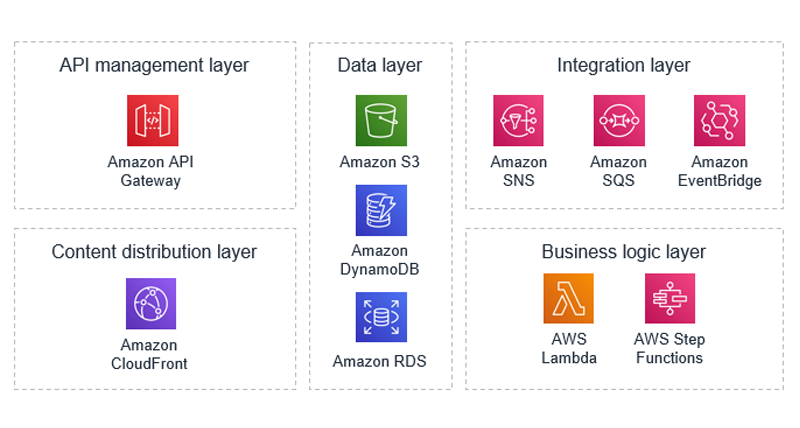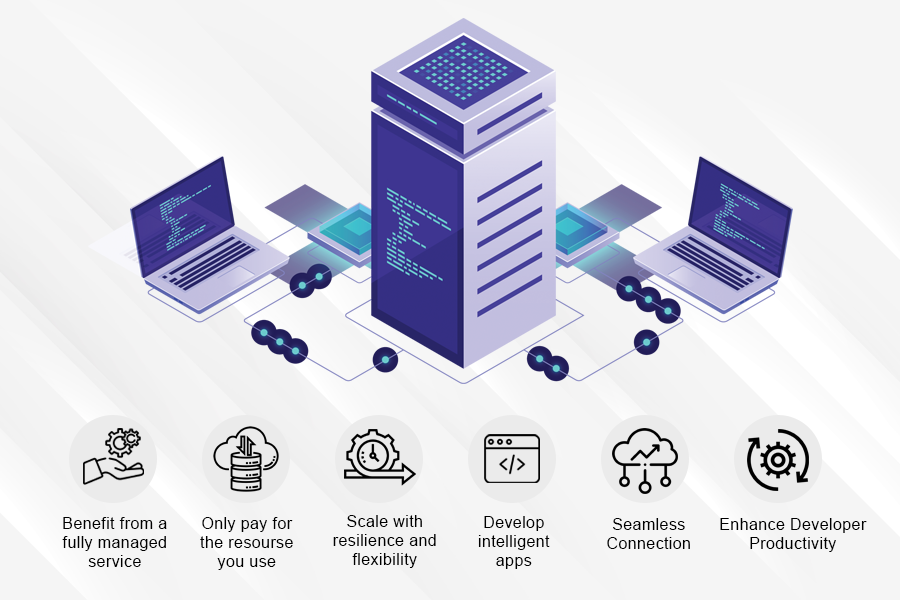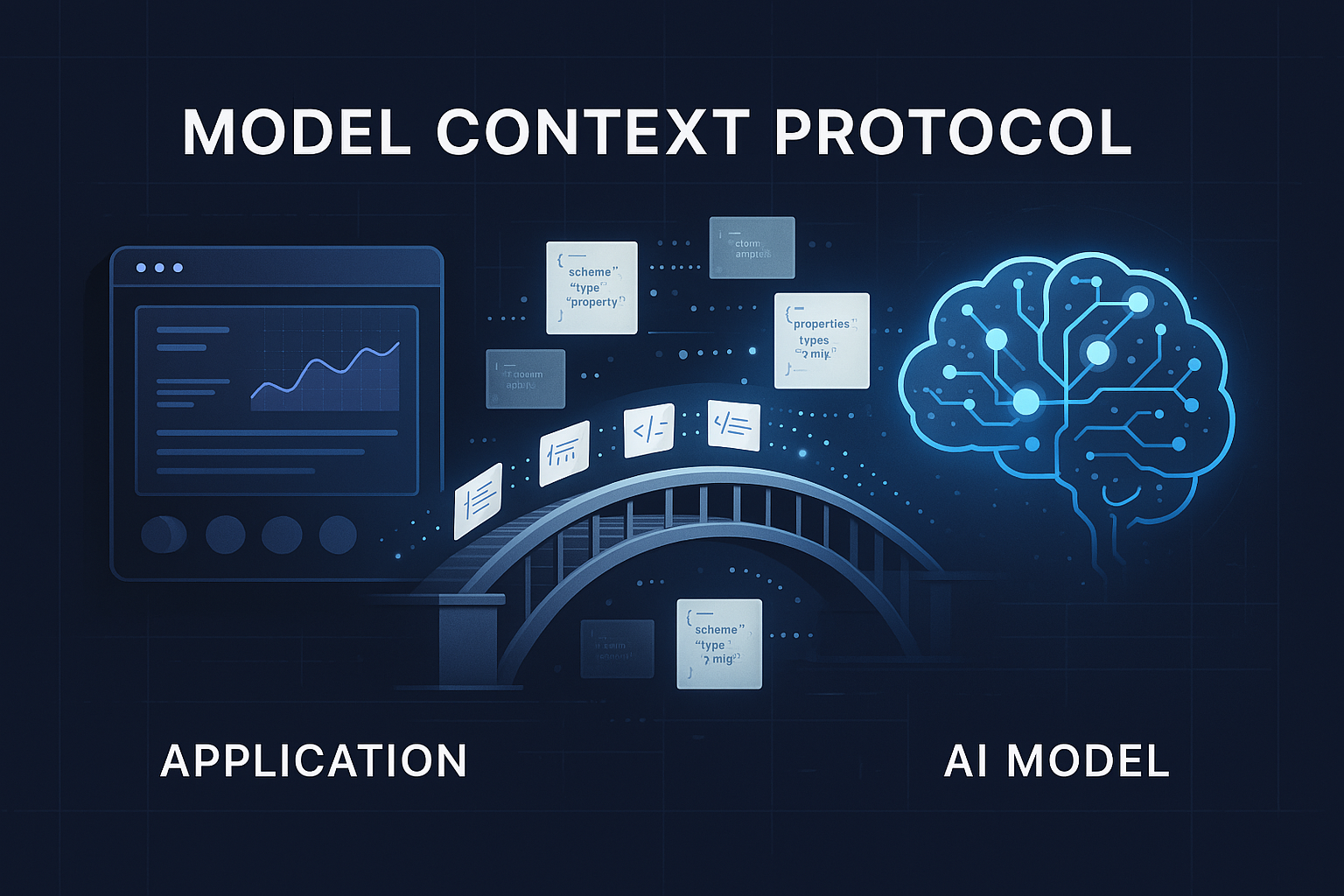
When and Why Should You Go For Serverless Applications?
Serverless architecture and serverless applications have become common lingos these days when it comes to building web applications, APIs, UI/UX components using various open-source libraries, languages, and even in the use of several other web development, deployment, scalability, and related operations. Covering different yet overlapping areas, namely ‘Backend as a Service’ and ‘Functions as a Service,’ a serverless application reduces your organizational IT infrastructure needs, resources and streamlines your core operations.
While the ‘Backend as a Service’ of serverless applications partially or fully incorporates third-party, cloud-hosted applications and services to manage server-side state and logic, the ‘Functions as a Service’ part offers a flipside to traditional application development. While the server-side logic is still written using conventional application development means, the serverless FaaS architectures operate in stateless compute containers fully managed by a third party and are event-triggered.
The market trends and popularity of serverless architecture and applications testify to its robust nature, scale, and power to transform IT infrastructure and development services forever.
The Serverless Architecture Market and the Drivers Behind It's Growth:

For the commoner looking to get an overall idea of the serverless architecture market, we are presenting some of the leading market research data and statistics performed by industry stalwarts. The serverless architecture market value stood at USD 7.6 billion in 2020. Well, that is definitely a massive market size. But what is more stunning is the growth rate at which the serverless architecture market is projected to rise. With a superb CAGR of 22.7%, the same serverless architecture market is expected to reach a whopping USD 21.1 billion by 2025!
But what is driving this craze for serverless architecture? According to the experts, the ease of supporting distributed workloads is one tremendous advantage that has led to the increased adoption of serverless architecture across global players. The ever-increasing performance demands and application availability are causing companies to look towards the cloud for faster scalability and fewer resources and expenditures.
While some experts believe that the emergence of IoT and a completely new marketplace for functions will give considerable perks to serverless architecture vendors, others believe that the security and compliance concerns over the loss of infrastructure controls will impede the projected growth.
But what is serverless architecture? How does it impact IT infrastructure, including web and application development? What is its role behind the large-scale popularity of cloud automation? Should you and your enterprise also invest in suitable serverless architecture services? If so, when and why?
Let’s try to find out the answers to these questions.
What is a Serverless Architecture and Application?

‘Serverless’ has created a revolution in every industry that uses IT-enabled services. It is a unique software architecture where application logic is implemented in an environment that is exclusive of visible processes, servers, virtual machines, or operating systems.
But is such an environment actually feasible?
Yes, the environment in concern is actually running on top of an operating system and is employing virtual machines or physical servers. But the best part is that the responsibility of managing and provisioning the infrastructure rests with the third-party service provider.
Essentially developed as a cloud computing architecture, serverless enables software developers to build and run codes without the need to monitor, provision, or manage infrastructure. You can run code on-demand without managing any infrastructure. With serverless architecture, businesses and enterprises can scale their operations by focusing on application development without worrying about the infrastructure needed to manage, operate and implement them. With some of the most exemplary characteristics like-
- Built-in availability
- Fault tolerance
- No-server management
- Pricing by consumption and
- Scalability with use,
Serverless applications have evolved as the need of the day.
How Does a Serverless Give You an Edge Over Traditional Architectures?

A software developer who is implementing services and functions that are communicating with each other and the external world has a couple of options before him to materialize things that he has envisioned.
If he goes the traditional way, he will have to combine the services and functions developed into several distributed processes. This step is critical while installing, running, updating, and monitoring such processes for distinct operating systems running on specific servers or virtual machines.
But if he is taking the other route- the ‘serverless’ approach, he can simply focus on building and running the code. In this case, a third-party service provider will be in charge of deploying every resource, including the processes, the operating systems, the servers, and everything else. The third-party service provider is responsible for the underlying IT infrastructure and how efficiently he can put it to use to serve the client requests. The software developer does not have to worry about purchasing a virtual machine or a dedicated server.
Hence, the third-party services are-
- Elastic,
- Scalable,
- Handle customer requests based on the number, frequency, and time spent to process each,
- Cost-efficient for the purchase, configuration, and management of on-premises customer infrastructure or cloud infrastructural needs.
Thus, going ahead with serverless applications seems to be a win-win situation for every enterprise. However, certain downsides exist, like vendor lock-in and overlooking application performance metrics in certain instances.
Thus, comes the most pressing question of all why should you go for serverless applications? And if you and your enterprise are putting your foot forward to go for the serverless applications, when is the perfect time to implement the same?
Why Should You Go For Serverless Applications?

When we are talking about serverless, we should be concentrating on both its functionalities discussed above- BaaS and FaaS.
BaaS involves-
- User authentication
- Cloud storage
- Database management
- Hosting
- Push notifications and others.
On the other hand, the role of FaaS is-
- Hosting
- Scaling
- Optimization
- Modularity enforcement and others.
When you take the serverless approach, your DevOps team ensures that their backend engineering team and their front-end development team always have an application substrate that works every time! It is the fundamental dynamic that is driving the adoption of serverless applications and architecture.
But let’s look at some of the most definite upsides that will satisfy the ‘why’ behind serverless adoption.
Minimized Maintenance:

When an enterprise ‘goes the serverless way,’ it is actually doing something great for its developers. The developers can focus more on their core responsibilities- that is coding, and less on operations. When your developers spend less time and resources worrying about buying, patching, operating, and upgrading infrastructure- none of which is core to their business; you can ensure building superior and flawless codes.
A third-party serverless provider will automatically scale both horizontally and vertically to meet the operational demands of the enterprise. It will also ensure the presence of the required backend infrastructure for an impeccable application operation and handle any other necessary resource provisioning.
According to Jonathan Sullivan, CTO of NS1, going serverless will free up engineering cycles. Thus, it will help you focus on your top priority- building a flawless application and serving your customers.
Superb Cost-efficiency:

Serverless applications provide tremendous cost benefits to their customers. Whenever an organization seeks services from a third-party provider, it will create a massive cost-benefit perspective for the company. Using serverless applications means the company is paying solely for the resources it uses, rather than spending excess financial resources on-
- Renting servers,
- Securing servers or virtual machines in fixed quantities,
- Maintenance of always-on cloud computational services, or
- Maintenance of co-located resources 24X7.
Depending on the workload that serverless applications undertake, they can be potentially cheaper than their traditional alternatives. This is because serverless applications run on ‘Pricing by consumption.’
What does that mean?
‘Pricing by consumption’ is an innovative model where companies have to pay for metrics like the number of times a code is run, the memory required for running the code, and the code execution duration. You don’t have to pay for the idle time that the code isn’t running. Since serverless essentially means on-demand and pay-as-you-go, it is the most cost-effective route that companies will take to have a healthier financial bottom line at the end of the fiscal year.
When Should You Go For Serverless Applications?

The host of advantages mentioned above can seem quite lucrative for every organization to take the serverless approach. However, it is not a one-size-fits-all approach. It might not be ideal for your organization. Thus, it is advisable to start small and experiment with applications that can be quickly deployed. According to Mr. Sullivan’s remarks, rapid prototyping can be an excellent entry point for companies interested in using serverless applications.
But why shouldn’t every company go for serverless applications?
Serverless architecture is suited to run stateless applications. These applications don’t maintain user states and data over prolonged periods. As a result, serverless architecture creates cost-effective solutions for those applications that don’t need every component to run constantly, like event-driven functionalities, data transfer via middleware, or batch jobs.
But serverless is not suitable for long, compute-intensive applications. The reason being its cost. For these kinds of applications, serverless can become immensely costly. On the other hand, enterprises can employ dedicated compute instances to run such applications, which will be relatively cheaper. Since serverless isn’t suitable for every application but can offer significant upsides for stateless applications and those that run periodically, you should weigh every factor minutely before taking this approach.
Closing Thoughts:

The most prominent players of the IT world have started investing significantly in serverless architecture and applications. With the global increase of cloud adoption and automation, enterprise stalwarts like Google, AWS, Microsoft, IBM, SAP, etc., are reinforcing their serverless offerings. Since it is just the tip of the iceberg, considering how serverless architecture will impact the creation and operation of applications, you should wait and watch before taking any drastic measures. Carefully analyze your business objectives and operational minutia before taking the plunge with serverless applications.
Popular Tags
Recent Posts
Building Intelligent Agent Teams with Google's ADK: A Developer's Guide
Model Context Protocol (MCP): The Future of Human-AI Collaboration in Business Applications
Why AI-Powered Software Development is the Key to Unlocking Business Growth in 2025
AI Application Development in 2025: What Every Business Should Expect and How to Prepare
We are at























